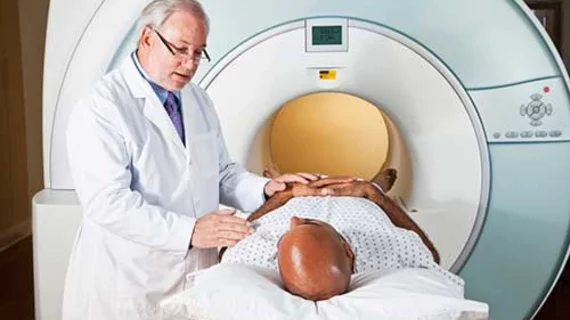What does the rise of radiology fellowships mean for general radiologists?
Radiology fellowships are on the rise, meaning a greater demand for niche-trained imagers and a lesser demand for generalists—but the importance of general radiologists shouldn’t be underestimated, one group of researchers argue in this month’s Journal of the American College of Radiology.
First author Eric Friedberg, MD, of the department of radiology and imaging services at Emory University in Atlanta, and colleagues said in JACR that as radiology becomes increasingly subspecialized and more med school graduates turn to fellowships, clinicians have questioned the utility—and necessity—of the general radiologist.
“Although opinions exist that general radiologists are best suited for ‘fairly simple outpatient care and possible overnight emergency care and urgent inpatient care,’ practicing entirely within the narrow confines of one’s fellowship subspecialty area is, in reality, uncommon,” Friedberg et al. wrote. “In fact, recent data indicate that more than one-half of all radiologists spend the majority of their work effort as generalists.”
Indeed, the authors said, today’s radiology landscape is one where physicians should expect “considerable work” outside of their chosen specialty. Imagers in highest demand have both general capabilities and a fellowship under their belts, but will likely spend less than half of their time in that specialty.
Friedberg and his team said rather than assuming the traditional generalist is a dying breed, the field should reframe what a general radiologist looks like, starting with acknowledging the roles they play in everyday practice.
General radiologists are key to rural areas in the U.S., the authors wrote, because healthcare in those areas, as well as imaging staff, is often limited. Radiologists employed at small practices like these are often expected to work, by necessity, day and night as generalists who can interpret a range of film.
“Despite creative solutions to meet market demands for subspecialized coverage, radiologists in most radiology practices, from small to large, still need to interpret studies outside their fellowship-training subspecialties to serve the needs of their hospitals and their communities,” Friedberg and colleagues said.
Generalists play a similar role in the military and veteran healthcare services, where limited access to experts means those who are available need to be proficient in a number of specialties. They’re often found at trauma bays in the ER, the authors said, interpreting scan after unique scan in an attempt to diagnose emergency injuries and illnesses quickly.
“In the academic setting and in large, subspecialized groups, emergency radiologists may be viewed as generalists because of their ability to interpret across the anatomic boundaries that delineate the traditional radiology subspecialties,” the authors wrote, noting that, as hospitals and practices suffer from money cuts, general radiologists will be more desired than employees without such broad experience.
General radiologists are also key to teleradiology efforts, they said, and remain the most critical contributors to successful teleradiology practices. And those services don’t only stretch across the U.S.—they also aid overseas initiatives to bring quality radiology services to underequipped, understaffed communities in third-world countries.
“Although the original jack-of-all-trades general radiologist may be facing extinction in an increasingly subspecialized imaging marketplace, the newly defined generalist—one who may be fellowship-trained and can read proficiently across a variety of radiology subspecialties—remains an integral part of many diverse radiology practices,” Friedberg et al. said. “Radiologists who maintain general capabilities will remain critical to the success of the specialty, providing the necessary glue to permit radiology groups to meet the onsite and offsite needs of their many practice locations.”

